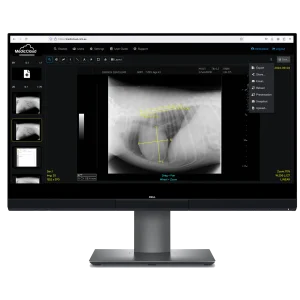Home » Email Scams Targeting Australian Businesses – Stay Alert!
How to spot and avoid email scams
In today’s digital-first environment, email continues to be one of the most widely used communication tools—and unfortunately, a favourite method for cybercriminals. At Medic Cloud, we firmly believe that cybersecurity begins with education. As a follow up to our telephone scams blog, we’ve created this blog to help you identify email-based scams and safeguard your business, your team, and your sensitive data.

Sam, Medic Cloud Managing Director
Why email scams pose a serious threat
Cybercriminals use email scams—commonly referred to as phishing attacks—to deceive recipients into sharing confidential information, clicking on malicious links, or downloading dangerous attachments. These attacks are growing increasingly sophisticated, making them more difficult to detect. As a result, they cost both individuals and businesses billions of dollars every year.
How to recognise common email scams
To better protect yourself, it helps to recognise the most frequent tactics used in email scams:
-
Fake invoices or payment requests: Scammers may send emails that appear to come from a supplier or colleague, urging you to make an urgent payment. While the email might look legitimate, it often contains fraudulent bank details or payment links.
-
Password reset or login requests: You might receive an email pretending to be from a trusted service like Microsoft or Google, asking you to reset your password. The link usually leads to a counterfeit login page designed to steal your credentials.
-
Threat-based scams: These emails warn you that your account will be suspended or compromised unless you take immediate action. Scammers use fear to prompt quick, unthinking responses.
-
Business email compromise: A scammer impersonates a senior executive, requesting the transfer of funds or sensitive information. These scams can be highly convincing, often using spoofed email addresses or compromised accounts.
Spotting the red flags
To detect scams early, watch out for these warning signs:
-
Unexpected emails making urgent requests
-
Spelling or grammatical errors anywhere in the title or body of the message
-
Email addresses that look suspicious or slightly altered
-
Generic greetings such as “Dear Customer”
-
Links or attachments that seem unrelated to the message content
Software platforms we offer at Medic Cloud
How to respond to suspicious emails
Taking the right steps can prevent major security incidents:
-
Never share your username or password via email. Medic Cloud will never request this information.
-
Verify the sender by calling them directly using contact details you already know. Don’t reply to the suspicious email.
-
Report it immediately to your internal IT or cybersecurity team.
-
Contact us if you’re unsure whether an email is legitimate. We’re here to help.
Foster a speak-up culture
If you receive a suspicious email or feel that something doesn’t seem right, say something. There’s no need to feel embarrassed—email scams are increasingly common and ever-changing. Open communication within your organisation is crucial for catching threats early and preventing broader issues.
Email scam statistics in 2024
| Timeframe | Email Scams Reported | Estimated Cost to Organisations | Estimated Cost to Individuals |
|---|---|---|---|
| Daily | 3.4 million+ | AUD $38 million | AUD $5.2 million |
| Weekly | 23 million+ | AUD $266 million | AUD $36.4 million |
| Annually | 1.2 billion+ | AUD $13.8 billion | AUD $1.9 billion |
Source: ACORN, Scamwatch, and industry research reports (2024)
Final thoughts
Scammers depend on people being too rushed or too intimidated to double-check. That’s why we encourage every client to remain vigilant and reach out when in doubt. Cybersecurity is a collective responsibility—and you’re not alone. Let us support you in staying safe online.
Read more blogs

Subscribe to Medic Hub
Get the latest insights direct to your inbox.





